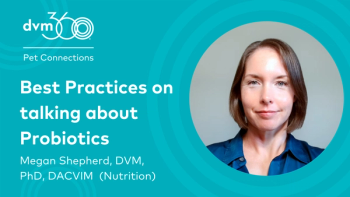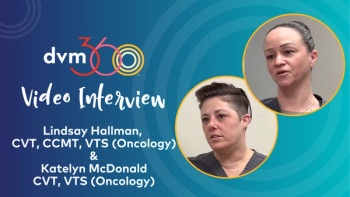
Q&A: Building the veterinary pipeline with Niccole Bruno, DVM
blendVET founder Niccole Bruno, DVM, explains how hands-on veterinary programming, distributed mentorship, and hybrid clinic–school partnerships can diversify the veterinary pipeline and expand access to care.
Niccole Bruno, DVM, CEO and founder of blendVET, discusses practical strategies to expand access to veterinary careers and improve community care through hands-on pathway programming.
Editor’s note: The following is an edited and condensed Q&A based on a recent dvm360 interview.
dvm360: What is the mission of blendVET and why did you focus on middle-school students?
Bruno: blendVET was created to expose young people to what veterinary medicine is and what it can be. Wanting to be a veterinarian at age 12 but lacking exposure motivated me to fill that gap. Middle school is a pivotal time for career curiosity. Without deliberate programming, students never see the profession or the pathways into it. blendVET’s hands-on events aim to plant and nurture that seed, especially in communities with limited veterinary infrastructure.
dvm360: What does success look like for the program over the next 5–10 years?
Bruno: Success is multi-stage: creating programming that meets needs at every point in the pipeline; seeing early participants choose relevant undergraduate majors; watching participants progress into vet school, vet tech roles, practice management, or allied careers; and ultimately graduating a cohort of blendVET scholars working across the profession. Short-term wins—students choosing a next step, finding mentorship, or gaining confidence—are also meaningful markers of progress.
dvm360: Why is hands-on exposure especially important, and which activities spark interest most reliably?
Bruno: Students learn by doing. Passive lectures don’t reveal aptitude or ignite curiosity the way a hands-on station does. A 15-minute activity—picking up a needle driver, for example—can show a student they have dexterity and interest, or it can show them a different strength. These immediate, practical experiences empower students to pursue additional learning and demystify what veterinarians actually do.
dvm360: How should mentorship be structured so early interest becomes a realistic pathway?
Bruno: Mentorship should be distributed across a network rather than relying on a single hero mentor. blendVET encourages volunteers to share contact information and fosters institutional partnerships so students can access short observational opportunities (1–2 hours), virtual mentoring, and follow-up resources. Establishing simple expectations, such as how often to check in, preferred modes of communication, makes mentorship feasible for a wide range of clinicians, including those who are busy or introverted.
dvm360: What barriers—socioeconomic or racial—do students face, and how can programs address them?
Bruno: Barriers are systemic. Some schools lack formal pathways (eg, CVA programs), parents may be unaware of career options, and the cost of veterinary education is a real deterrent. Programs can mitigate these barriers by educating parents, connecting students with scholarships and alternative career paths (eg, industry roles that offer tuition support), and intentionally recruiting in areas with limited access to care. Representation matters: when students and clients see veterinary teams that reflect their communities, trust and access to care improve.
dvm360: Are there scalable models, whether virtual or in-person, that you recommend for clinics and schools wanting to help?
Bruno: A hybrid approach works best. In-person, hands-on events create immediate impact; virtual programming extends reach to schools and regions blendVET cannot visit. Clinics can participate by offering short observation hours, hosting small groups, or partnering with local high schools and tech programs to provide tours and career workshops. Even small, consistent acts like allowing students to observe for an hour or offering a quarterly clinic open day build sustained exposure.
dvm360: If a reader could take one action after this interview, what should it be?
Bruno: Say “yes.” You don’t need to found a program. Simply show up. Volunteer for a local pathway event, provide 2 hours of observation, or agree to a monthly check-in with a student. Collective small commitments create a village that can change the profession’s future, improve access to care, and restore professionals’ sense of purpose.
Newsletter
From exam room tips to practice management insights, get trusted veterinary news delivered straight to your inbox—subscribe to dvm360.






